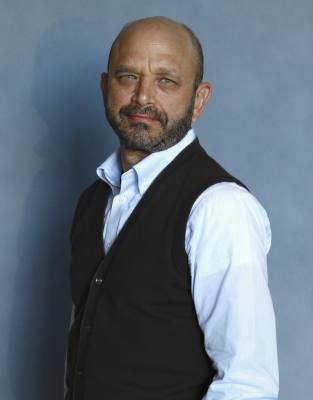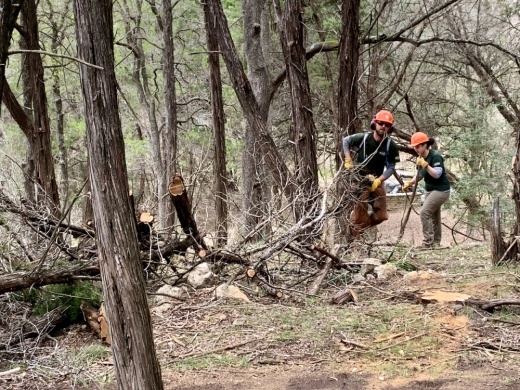The work is being conducted in the greenbelt in two phases at an overall cost of $350,000. To date, project costs have totaled $191,517, according to Chris Rea, wildfire mitigation specialist with Lake Travis Fire and Rescue, which is managing the work for the city.
Despite dealing with the challenges of the COVID-19 pandemic and recent rainy, wet weather, Rea said work crews will finish the work with the available budget, and he estimates the first phase in the western portion of the greenbelt to complete by the end of August. Work will continue in the eastern end of the greenbelt until about March 2022, he said.
“When we first got started we were dealing with COVID,” Rea said. “We are in a good rhythm now. We feel comfortable coming in under budget.”
The work underway in the greenbelt is intended to construct shaded fuel breaks, which are designed to prevent fire from easily traveling through wooded areas. These breaks are gaps and clearings between trees that slow a potential wildfire by keeping it close to the ground and away from the high branches, or the crown, of trees.
Work in the greenbelt also is intended to move dense trees 30 to 100 feet away from private property lines. Hamilton Greenbelt totals about 90 acres, but due to rough terrain, 75 acres fall under the scope of the wildfire project.
Also discussed by Rea is a future project to perform wildfire prevention adjacent to North Lakeway Village off Clara Van Drive. Rea estimates that the 5-acre project will begin in April 2022 and largely will be funded through a $37,088 grant from the Federal Emergency Management Agency. Thus, the cost to the city is expected to total $9,272.
During the presentation, Council Members Steve Smith and Sanjeev Kumar asked about the cost to maintain the shaded fuel breaks that have been created by the ongoing work. Rea said maintenance typically entails work crews returning every three to five years to remove tree seedlings and that he would provide the council with an estimate.
As part of the conversation, Council Member Keith Trecker asked what the city could do about overgrown private lots within the city.
Council and city staff discussed working out a process for ensuring property owners of vacant lots within the city were aware of the city’s maintenance requirements, especially given the amount of dead plant material created by the February winter storm.
Erin Carr, director of building and development services, said the city does mail notices to property owners who have lots that are not properly maintained and that some property owners might still be reacting to the impact of the winter storm on their plants.
“They are waiting and hoping to see if things are going to come back to life, and they are probably not at this point,” Carr said.





